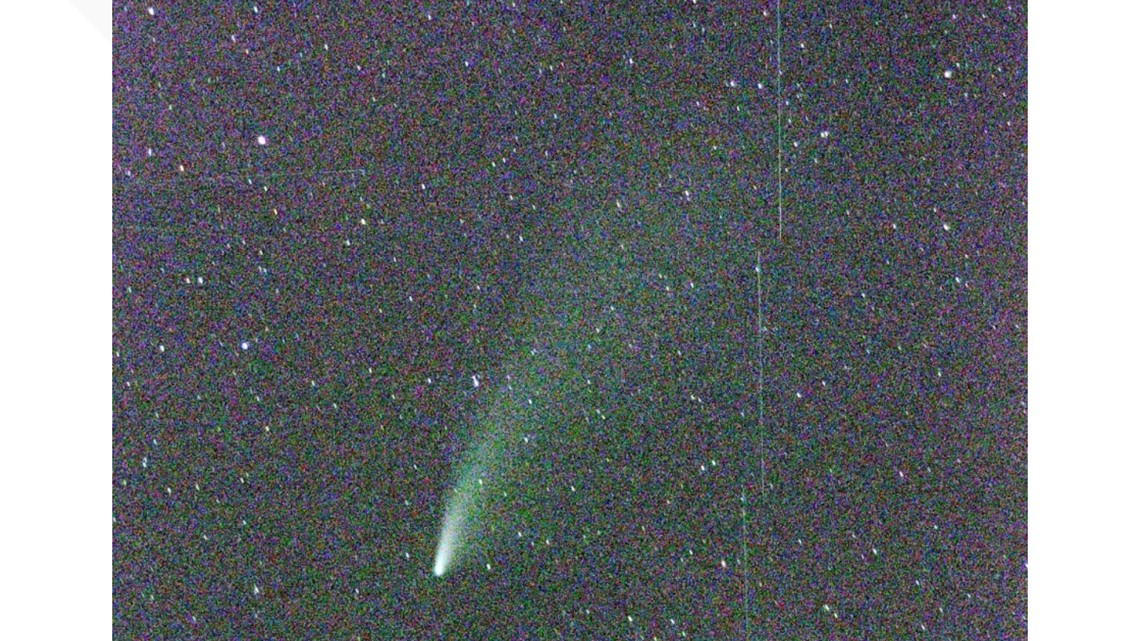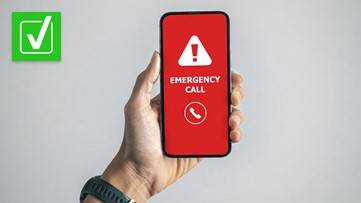SpaceX, founded and headed by CEO Elon Musk, one of the richest people in the world, continues to launch batches of satellites into space with the goal of delivering high-speed broadband internet that is accessible across the globe.
While SpaceX and other companies, such as Amazon, have plans to launch thousands of more satellites into low Earth orbit in the coming years, some people have been critical of the launches. One of the reasons critics cite is that satellites are making it more difficult for astronomers to observe space.
THE QUESTION
Are satellites making it more difficult for astronomers to observe space?
THE SOURCES
- Chaz Hafey, astronomy and physics lab manager at Dallas College Brookhaven
- International Astronomical Union
- Satellite Constellations 1 Workshop
THE ANSWER
Yes, astronomers say a growing number of satellites in low Earth orbit is making it more difficult to observe space.
WHAT WE FOUND
In a January 2021 report, NASA said the amount of debris moving through space, commonly known as space junk, has increased exponentially since space exploration began in 1957 with the Soviet Union launch of Sputnik, the world’s first artificial satellite.
NASA attributes the spike in space debris to two factors: an increase of satellites and other objects being launched into space, and intentional or accidental spacecraft explosions and collisions.
The European Space Agency says about 11,370 satellites have been placed into Earth’s orbit since the space age began in 1957. About 6,900 of those are still in space and about 4,000 are still functioning.
In May 2019, SpaceX launched its first satellites aimed at delivering a high-speed broadband internet system across the world, known as Starlink. SpaceX has permission from the Federal Communications Commission to launch about 12,000 total Starlink satellites. More than 1,400 Starlink satellites have been launched into low Earth orbit so far, according to Chaz Hafey, an astronomy and physics lab manager at Dallas College Brookhaven.
The increase in satellites has led to a major issue for astronomers, Hafey said.
“The problem is hundreds of low orbiting satellites can reflect sunlight while astronomers are trying to take images and get information about objects in the sky,” he said.
Hafey cited a personal example of the impact satellites can have when observing the night sky. He sent the VERIFY team a picture he took in 2020 of Comet NEOWISE. On the right side of the photo, there are dashes of light.
“Starlink satellites are flying right through the field of view,” Hafey said. “They are the dashes that you see. The dashes are the result of the Starlink satellite reflecting sunlight and moving through the field of view while the [camera] shutter was open.”


Hafey said he recognizes the benefits a satellite constellation such as Starlink could provide.
“Don't get the wrong idea, I like this technology to have internet from anywhere in the world,” he said. “But should we sacrifice the night sky to get it?”
Astronomers across the world have raised similar concerns.
A virtual conference, called Satellite Constellations 1 Workshop, was organized in the summer of 2020 by the National Science Foundation’s National Optical-Infrared Astronomy Research Laboratory and the American Astronomical Society. The workshop brought together astronomers and satellite operators to discuss the impacts that large satellite constellations have on astronomy and the night sky.
“Recent technology developments for astronomical research — especially wide-field imaging on large optical telescopes — face significant challenges from the new ability in space and communication technologies to launch many thousands of LEOsats [low-Earth orbit satellites] rapidly and economically,” a report from the workshop says.
Another virtual conference, organized by the International Astronomical Union (IAU) and the United Nations Office for Outer Space Affairs in October 2020, discussed the issues astronomers are facing, and what can be done to ease those challenges. Following the conference, a list of recommendations was drafted to be presented to the United Nations Committee on the Peaceful Uses of Outer Space, including calling for “internationally agreed regulation” to mitigate the effects of satellite constellations on astronomy.
“Owing to their low orbits, a considerable number of satellites may be visible to the unaided eye, especially at low elevations above the horizon near twilight and dawn,” the IAU says in the report. “More seriously, a much larger number of satellites will be detected during their flight paths by the highly sensitive astronomical detectors of modern telescopes.”
SpaceX has acknowledged astronomers’ concerns and worked on what it calls “brightness mitigation efforts” to darken its Starlink satellites. In January 2020, Musk tweeted, "One way or another, we’ll make sure Starlink doesn’t inhibit new discoveries or change the character of the night sky."
The IAU report says the adjustments by SpaceX so far are effective but don’t reach brightness goals desired by astronomers.
So, while satellites such as Starlink could provide accessible high-speed internet to communities across the globe, they also make it harder for people on planet Earth to explore outer space.
VERIFY
Our journalists work to separate fact from fiction so that you can understand what is true and false online. Please consider subscribing to our daily newsletter, text alerts and our YouTube channel. You can also follow us on Snapchat, Twitter, Instagram or Facebook.













